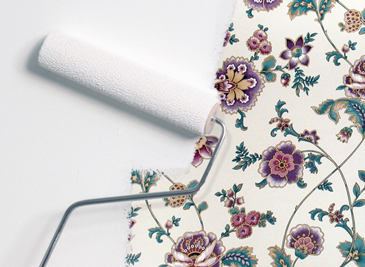You don’t necessarily have to remove your old wallpaper to paint your walls a different color.
Removing wallpaper—especially if it’s been on the walls for years—can cause unexpected damage to your walls. But if it’s in good condition and has no signs of adhesion failure, there’s no reason to invest a lot of time and effort in removing it before painting your walls.
Also, by leaving the wallpaper in place, your walls will stay in their current condition, and you’ll be able to start painting without delay.
Prep before Painting
It’s vital to prepare your walls carefully before painting. Follow these simple steps to ensure the best results:
- Start by replacing any damaged sections and adding adhesive to loose pieces to minimize the chance the paper will fall.
- Add a thin line of clear caulk around the perimeter of the walls, at the joint seam where the paper meets the floor and ceiling. This will help seal the edges and keep the paper from peeling after you’ve painted.
- Cover heavily textured paper with a thin coat of joint compound (spackle). This material will help smooth out the surface so that the texture won’t show through the paint.
- Gently sand down the seams of the wallpaper so they’re not too noticeable.
- Apply a coat of oil-based primer to the entire surface of the walls before painting. This helps seal the adhesive within the paper and away from the moisture in the paint. We recommend using Benjamin Moore’s Fresh Start®.
- The wallpaper is now ready for painting. Because the moisture in latex paint can sometimes loosen wallpaper glue, causing bubbles or peeling, you should use oil-based paint.
Finally, it’s time to enjoy your freshly painted room.
Read more by visiting BenjaminMoore.com

